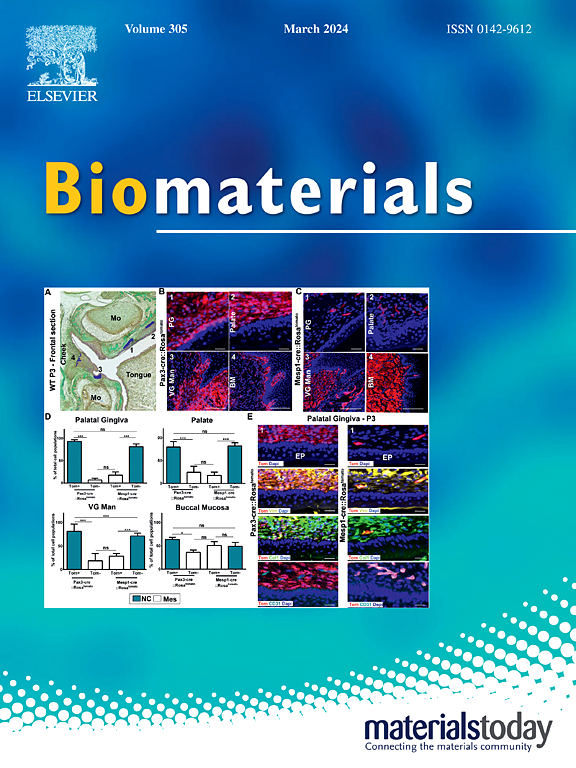Phototheranostics: An advanced approach for precise diagnosis and treatment of gynecological inflammation and tumors
IF 12.9
1区 医学
Q1 ENGINEERING, BIOMEDICAL
引用次数: 0
Abstract
Gynecological inflammations have a significant impact on the daily lives of women. Meanwhile, cancers such as ovarian, cervical, and endometrial cancers pose severe threats to their physical and mental well-being. While current options such as conventional pharmacotherapy, surgical interventions, and recent advancements in immunotherapy and targeted therapy provide viable solutions, they possess limitations in effectively addressing the intricacies associated with gynecological diseases. These complexities include post-surgical complications, early cancer detection, and drug resistance. The management of these challenges, however, requires the implementation of innovative treatment modalities. Phototheranostics has emerged as a promising approach to effectively address these challenges. It not only treats inflammation and tumors efficiently but also aids in disease imaging and diagnosis. The distinguishing features of phototheranostics lie in their non-invasive nature, minimal risk of drug resistance, and precise targeting capabilities through the use of photosensitizers or photothermal agents. These distinctive features underscore its potential to revolutionize early diagnosis and treatment of gynecological conditions. This review aims to summarize the application of phototheranostics in managing gynecological inflammation and tumors while highlighting its significant potential for early disease detection and treatment.
光疗:一种精确诊断和治疗妇科炎症和肿瘤的先进方法。
妇科炎症对女性的日常生活有重大影响。与此同时,卵巢癌、宫颈癌和子宫内膜癌等癌症对她们的身心健康构成了严重威胁。虽然目前的选择,如传统的药物治疗、手术干预、免疫治疗和靶向治疗的最新进展提供了可行的解决方案,但它们在有效解决与妇科疾病相关的复杂性方面具有局限性。这些复杂性包括手术后并发症、早期癌症检测和耐药性。然而,应对这些挑战需要实施创新的治疗方式。光疗已经成为一种有效解决这些挑战的有前途的方法。它不仅能有效治疗炎症和肿瘤,而且有助于疾病的成像和诊断。光疗的显著特点在于其非侵入性,最小的耐药风险,以及通过使用光敏剂或光热剂精确靶向的能力。这些独特的特征强调了它在妇科疾病的早期诊断和治疗方面的革命性潜力。本文综述了光疗法在妇科炎症和肿瘤治疗中的应用,并强调了其在早期疾病检测和治疗中的重要潜力。
本文章由计算机程序翻译,如有差异,请以英文原文为准。
求助全文
约1分钟内获得全文
求助全文
来源期刊

Biomaterials
工程技术-材料科学:生物材料
CiteScore
26.00
自引率
2.90%
发文量
565
审稿时长
46 days
期刊介绍:
Biomaterials is an international journal covering the science and clinical application of biomaterials. A biomaterial is now defined as a substance that has been engineered to take a form which, alone or as part of a complex system, is used to direct, by control of interactions with components of living systems, the course of any therapeutic or diagnostic procedure. It is the aim of the journal to provide a peer-reviewed forum for the publication of original papers and authoritative review and opinion papers dealing with the most important issues facing the use of biomaterials in clinical practice. The scope of the journal covers the wide range of physical, biological and chemical sciences that underpin the design of biomaterials and the clinical disciplines in which they are used. These sciences include polymer synthesis and characterization, drug and gene vector design, the biology of the host response, immunology and toxicology and self assembly at the nanoscale. Clinical applications include the therapies of medical technology and regenerative medicine in all clinical disciplines, and diagnostic systems that reply on innovative contrast and sensing agents. The journal is relevant to areas such as cancer diagnosis and therapy, implantable devices, drug delivery systems, gene vectors, bionanotechnology and tissue engineering.
 求助内容:
求助内容: 应助结果提醒方式:
应助结果提醒方式:


